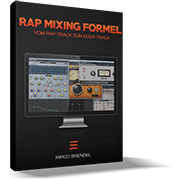Introduction
In today's fast-paced world, the aluminium food container industry stands out as a beacon of innovation and sustainability. With a remarkable blend of functionality and eco-friendliness, these containers have become essential in both domestic and commercial kitchens. The export of aluminium food containers has surged, underscoring their pivotal role in the global market. This article delves into the intricacies of aluminium food container manufacturers and their export dynamics, illuminating current trends, benefits, challenges, and future prospects.
1. The Aluminium Food Container Market
1.1 Current Trends
The aluminium food container market is experiencing a renaissance, driven by a growing awareness of environmental sustainability. Consumers are increasingly opting for recyclable materials, propelling manufacturers to innovate and diversify their product offerings. From sleek designs to enhanced functionality, the trends reflect a blend of consumer preferences and eco-consciousness.
1.2 Market Size and Growth Projections
The market has witnessed significant growth, with projections indicating an upward trajectory in the coming years. Analysts estimate that the global aluminium food container market could expand by over 5% annually, driven by rising demand in food services and takeout segments. This growth indicates a robust appetite for aluminium products across various regions.
1.3 Key Drivers of Demand
Several factors contribute to the soaring demand for aluminium food containers. The rise of the convenience culture, coupled with increasing consumer interest in eco-friendly packaging, has catalyzed this trend. Additionally, the food service industry's expansion plays a crucial role, as restaurants and catering businesses seek reliable and safe packaging solutions.
2. Benefits of Aluminium Food Containers
2.1 Sustainability and Eco-Friendliness
Aluminium is a champion of sustainability. Its recyclability ensures that it can be reused multiple times without losing quality. This eco-friendly characteristic resonates with environmentally conscious consumers and businesses alike, making aluminium a preferred choice for food storage.
2.2 Versatility and Durability
Aluminium food containers are celebrated for their versatility. They can withstand extreme temperatures, making them suitable for both hot and cold dishes. Their durability ensures that they can be transported without fear of breakage, enhancing their appeal for takeout and delivery services.
2.3 Cost-Effectiveness
While initial costs may seem higher than other materials, aluminium containers offer long-term savings. Their lightweight nature reduces shipping costs, and their reusability minimizes waste, making them a cost-effective choice for manufacturers and consumers.
3. Major Manufacturers in the Industry
3.1 Leading Global Players
The industry is home to several prominent manufacturers known for their high-quality products. Companies like Reynolds Group Holdings and Alufoil Products GmbH dominate the market, providing innovative solutions that meet global demands.
3.2 Emerging Brands
In addition to established players, several emerging brands are making waves in the industry. These brands often focus on niche markets or environmentally friendly products, catering to a growing segment of eco-conscious consumers.
3.3 Regional Manufacturers
Regional manufacturers play a crucial role in the export landscape. These companies often leverage local resources and knowledge to produce competitively priced products, serving both domestic and international markets effectively.
4. Export Markets for Aluminium Food Containers
4.1 North America
North America is a significant market for aluminium food containers, driven by the booming food service industry. The demand for convenient packaging solutions in restaurants and catering services fuels exports from manufacturers.
4.2 Europe
Europe’s stringent regulations regarding packaging sustainability create a conducive environment for aluminium food container exports. The region’s focus on environmental responsibility aligns perfectly with the attributes of aluminium containers.
4.3 Asia-Pacific
The Asia-Pacific region is witnessing rapid urbanization and a growing middle class, leading to increased demand for packaged foods. This surge presents lucrative opportunities for manufacturers looking to expand their export markets.
4.4 Emerging Markets
Emerging markets in Africa and Latin America are becoming increasingly relevant for aluminium food container exports. As these regions develop and consumer preferences shift, manufacturers are keen to tap into these new avenues for growth.
5. Export Regulations and Compliance
5.1 International Standards
Navigating the labyrinth of international standards can be daunting for manufacturers. However, compliance with these standards is crucial for successful exports. Organizations like ISO and ASTM provide guidelines that help ensure product safety and quality.
5.2 Certification Requirements
Various certifications, such as FDA approval for food contact materials, are essential for manufacturers seeking to enter foreign markets. Meeting these certification requirements not only enhances credibility but also opens doors to global opportunities.
5.3 Trade Agreements
Trade agreements between countries can significantly impact export dynamics. These agreements often reduce tariffs and facilitate smoother transactions, enabling manufacturers to penetrate new markets more easily.
6. Challenges Faced by Manufacturers
6.1 Competition
The aluminium food container industry is highly competitive, with numerous players vying for market share. Manufacturers must continually innovate and differentiate their products to remain relevant.
6.2 Economic Factors
Economic fluctuations can create uncertainty in the export market. Factors such as currency exchange rates and inflation can impact profitability and pricing strategies for manufacturers.
6.3 Supply Chain Issues
Supply chain disruptions, exacerbated by global events, pose significant challenges. Manufacturers must develop resilient supply chains to ensure timely delivery and maintain customer satisfaction.
7. Future Outlook for Exports
7.1 Innovations in Product Design
The future of aluminium food container exports hinges on innovation. Manufacturers are exploring new designs that enhance usability and aesthetic appeal, catering to evolving consumer preferences.
7.2 Market Expansion Strategies
To remain competitive, manufacturers are adopting market expansion strategies, including partnerships and collaborations. These strategies help them penetrate new markets and diversify their product lines.
7.3 Predictions for the Next Decade
Looking ahead, the aluminium food container market is poised for continued growth. As sustainability becomes a cornerstone of consumer choices, the demand for aluminium containers is expected to rise, creating exciting opportunities for manufacturers.
Conclusion
In summary, the export landscape for aluminium food containers is vibrant and full of potential. With their myriad benefits, including sustainability, versatility, and cost-effectiveness, these containers are well-positioned to meet the demands of a changing market. As manufacturers navigate challenges and embrace innovations, the future of aluminium food container exports looks remarkably promising.
Aluminium Food Container Manufacturers Export
-
abstract
- Neuling

- Beiträge: 2
- Registriert: 29.01.2024, 09:08
Wer ist online?
Mitglieder in diesem Forum: 0 Mitglieder und 7 Gäste
Die Rap-Mixing-Formel - Das Bestseller-Buch mit über 400 Verkäufen in 5 Ländern ist das erfolgreichste Rap-Mixing-Buch aller Zeiten. Nie wieder S-Laute, nie wieder pumpende Kompressoren, nie wieder nervige Wochenenden ohne Lernerfolg, nie wieder teure Fernschulen ohne Support! 50% Rabatt auf Amazon. Jetzt klicken

